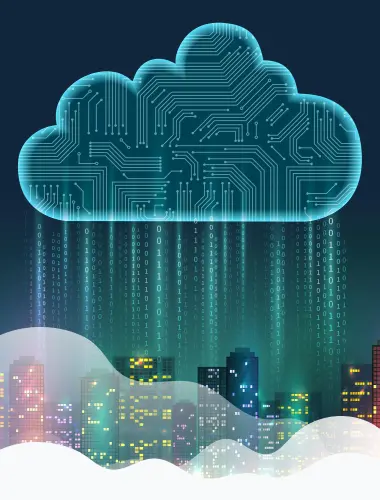Blogs
How Long Will The Internet Remain Reliable?
The digital divide must be eliminated so that all communities can in future unlock access to information, digital communication tools, and digital content in general.
Crisis and disaster can barge in anytime, bringing catastrophe and disruptions to our lives. India is high on the disaster ranking list. According to India’s National Policy on Disaster Management, almost 59 per cent of India’s landmass is prone to earthquakes; over 12 per cent of the land to floods; about 76 per cent of the coastline to cyclones and tsunamis; with droughts, landslides and avalanches close behind.
Statistically, according to the United Nations Office for Disaster Risk Reduction, between 2009 and 2019, the country experienced 321 incidences of natural disasters, leaving 108 crore people affected. 2020, the year of the coronavirus, changed the way people carried out business, ran errands, socially connected, and at the most basic level, lived everyday life – after which, 2021 began with the Uttarakhand calamity.
Emergency reaction and relief team activities require assimilation of information that is synced and can be distributed to the public accurately and immediately. But the destruction to a country’s vital infrastructure – such as roads, power lines, radio towers, transportation etc. – brought about by natural calamities retards crucial communication, in turn obstructing rescue efforts. One crucial saving grace in these hostile conditions is the global digital infrastructure consisting of terrestrial and mobile networks, data centers, Internet Exchanges, undersea cables and satellites that deliver the global Internet to all of us.
Crises don’t just change our lives, they also offer a chance to re-evaluate, see things differently and make meaningful investment decisions for the future – turning these challenges into new opportunities to make life better. Digital services have become indispensable to overcoming the challenges and making a crisis manageable. Smart digital applications and solutions, physical elements of AI and IoT, the transmission of data through networks, access to cloud computing and actually access to information of any type have the potential to mitigate the impact of a crisis and are just as vital as other critical services in a crisis, sometimes even essential for survival. These require robust and high-performance digital infrastructure, everywhere.
Never before in modern times have we seen an outbreak with such a global impact as the Covid-19 pandemic. Cities, countries, and entire regions of our world were put on hold, locked in isolation. But even during global lockdowns, the Internet kept private and business life running. This enabled people to stay in contact with loved ones they couldn’t meet with; many were also able to work from home. It allowed children and students to continue with their education. It helped doctors to provide consultations and therapy via telemedicine.
Even medical researchers, who we all pinned our hopes on, used digital applications to remain in touch and share data in their efforts to understand the virus, and find a vaccine. It kept the business world alive: e.g. global supply chains for different industries remained manageable and became even more efficient, and crucial financial services were delivered globally thanks to digital solutions. Therefore, one answer to some of the challenges posed by the Covid-19 pandemic – and the modern world in general – is sophisticated digital infrastructure.
In a globalised world, economic growth and the development of societies in most regions is now based on digital communication and digital services, which depend on the underlying digital infrastructure. The use of smart digital applications and solutions will make people’s lives better.
The quality of crisis management in regions with solid, reliable digital infrastructure provides a stark contrast to those regions of the globe that remain underserved. People and companies from the latter regions have disadvantages that can last for decades. Thus, the digital divide must be eliminated so that all communities can in future unlock access to information, digital communication tools, and digital content in general.
Different stakeholders, including governments, investment policy makers, and the Internet industry itself must take as a high-priority mandate the goal of creating a minimum level of robust digital infrastructure everywhere. This century is presenting us with global challenges, but these can be transformed into opportunities by people and businesses. Digitalisation – relying on robust digital infrastructure – everywhere will allow us to minimise the impact on people and business as much as possible in any crises ahead of us. It will not only enhance the way we manage upcoming crises, but will also enable us to live better lives in the future. This is why, in times of lockdown and the immobility that comes with crises, the world needs a full digital unlocking!
– Ivo Ivanov, CEO, DE-CIX Global
Subscribe to Newsletter
